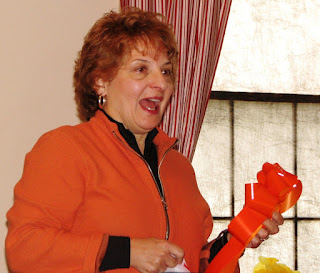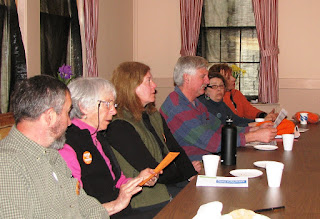U. S. environmental law recognizes the principle of mitigation, by which disruption of or impacts to the human and natural environment are avoided, minimized or compensated by other actions, strategies, programs, and the like. Thus, in the case of wetlands, the U.S. Environmental Protection Agency (EPA) and the U.S. Army Corps of Engineers (the Corps) set forth a "mitigation sequence" in 2008: anyone wishing to obtain a permit to impact a wetland must first seek to avoid and minimize that disruption, and then to compensate for unavoidable impacts. A sample compensatory scheme might be that a Wal-Mart, which wants to build on wetlands, as in Littleton, would create equivalent wetlands somewhere else. Wetlands compensation has had a low success rate, critics argue. Studies have shown that compensatory schemes have actually led to a net loss in wetlands and that equivalencies are difficult to establish; a wetland lost to development or construction may have unique features that cannot be created elsewhere. Monitoring and enforcement are low.
Environmental justice advocates also question the practice of compensatory mitigation. This is especially true in the case of siting locally unwanted land uses (with the apt acronym, LULUs) such as hazardous waste sites. In these cases, a would-be developer might offer to compensate a community or an area for the harms that the LULU causes. Money or an amenity (a new school, recreation center, housing complex, or the like) might be the remedy proposed to make the community whole for the damages it will suffer as a result of the facility.
However, NYU law professor Vicki Been notes that a "relatively small number of people are willing to change their minds about a facility in exchange for compensation."* Further, Professor Been calls upon the environmental justice movement to articulate the circumstances under which compensation schemes are "morally objectionable" and why. She lists four major moral questions that must be considered:
- First, if the siting of a LULU involves risks to health and safety, "the question arises whether compensation schemes commodify, or subject to the free market, matters that should not be bought and sold. Society has chosen not to allow people to sell their kidneys to the highest bidder; should a similar judgment be made about whether people can sell their freedom from the health risks posed by nearby LULUs?"
- Second, it is "likely that the communities that accept LULUs under compensated siting programs will be our poorest communities, because those communities lack alternative sources of funds. The distributional consequences of compensated siting programs therefore raise fundamental questions about our treatment of the poor and about the voluntariness of any site accepted by the communities."
- Third, should a community be able "to trade away the rights of future generations, who aren't represented at the bargaining table"?
- Fourth, "what are the essential elements of a voluntary agreement? Is an agreement voluntary, for example, if communities are, relative to site developers, ignorant about the risks and harms the facilities will impose?"
The standard definition of environmental justice set forth in 1998 by the EPA's Office of Environmental Justice mandates "the fair treatment of all races, cultures, incomes, and educational levels with respect to the development and enforcement of environmental laws, regulations, and policies. Fair treatment implies that no population should be forced to shoulder a disproportionate share of exposure to the negative effects of pollution due to lack of political or economic strength."
As Robert R. Kuehn notes, the EPA further elaborated that environmental justice "is based on the premise that . . . it is a basic right of all Americans to live and work in 'safe, healthful, productive, and aesthetically and culturally pleasing surroundings'."***
Living under or in sight of a high voltage transmission line with 80'-130+' towers is not an aesthetically and culturally pleasing surrounding, and there is evidence that questions whether it is safe, healthful and productive as well.
What compensation would you accept for this LULU in your community? Is there morally acceptable mitigation? Is it the promise of installing high capacity broadband technology for Coos County?
-------------------
*Vicki Been, "What's Fairness Got to Do With It? Environmental Justice and the Siting of Locally Undesirable Land Uses," Cornell Law Review (1993).
________ , "Compensated Siting Proposals: Is it Time to Pay Attention?," Fordham Urban Law Journal (1994).
**See also the letter written on behalf of the Uashaunnuat, Innu of Uashat mak Mani-Utenam, December 2, 2010, to the DOE concerning the Presidential Permit application for the Champlain Hudson Power Express project.
***Robert R. Kuehn, "A Taxonomy of Environmental Justice," Environmental Law Reporter (2000).



















